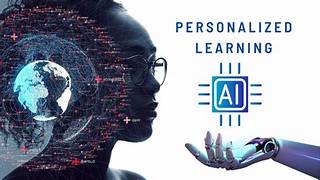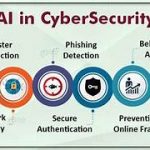What Are the Applications of AI in Personalized Learning?
Artificial Intelligence (AI) is transforming various sectors, and education is no exception. One of the most significant advancements AI has brought to education is personalized learning, where teaching methods and educational content are tailored to the unique needs, skills, and interests of individual learners. By leveraging AI, educators and institutions can create more effective, engaging, and accessible learning environments. This article explores the applications of AI in personalized learning, its benefits, and the challenges it presents.
Understanding Personalized Learning
Personalized learning is an educational approach that aims to customize learning experiences to meet the specific needs of each student. Unlike traditional one-size-fits-all models, personalized learning takes into account:
- Learning Pace: Adapting the speed of instruction to match the learner’s capabilities.
- Content Preferences: Providing materials that align with the student’s interests and goals.
- Learning Styles: Catering to auditory, visual, or kinesthetic learners.
AI plays a pivotal role in achieving these objectives by analyzing vast amounts of data, identifying patterns, and offering tailored solutions.
Applications of AI in Personalized Learning
1. Adaptive Learning Platforms
AI-powered adaptive learning platforms adjust the difficulty and type of content based on the learner’s performance and engagement. These platforms use real-time data to:
- Identify areas where a student struggles.
- Recommend additional resources to strengthen weak points.
- Challenge advanced learners with more complex materials.
For example, tools like DreamBox and Knewton provide adaptive lessons in subjects like mathematics and science, ensuring students learn at their optimal pace.
2. Intelligent Tutoring Systems (ITS)
Intelligent tutoring systems act as virtual instructors, offering one-on-one guidance and support. These systems use natural language processing and machine learning to:
- Provide instant feedback on assignments and quizzes.
- Answer questions in real-time.
- Simulate human-like interactions to enhance engagement.
Examples include Carnegie Learning’s MATHia and Pearson’s MyLab, which focus on delivering tailored tutoring experiences.
3. Personalized Content Recommendations
AI algorithms analyze a student’s learning history, interests, and progress to suggest relevant educational materials. This application mirrors the recommendation systems used by platforms like Netflix or Spotify but is tailored to educational content. For instance:
- Students studying biology may receive curated videos, articles, or quizzes on specific topics they need to improve.
- Platforms like Coursera and Khan Academy offer personalized course recommendations based on user preferences and activity.
4. AI-Powered Assessment Tools
Traditional assessments often provide a limited view of a student’s abilities. AI-powered assessment tools offer a more comprehensive analysis by:
- Identifying knowledge gaps.
- Tracking progress over time.
- Offering detailed feedback on areas that need improvement.
These tools also enable formative assessments, allowing educators to adjust instruction based on real-time insights rather than waiting for periodic exams.
5. Gamification and AI-Enhanced Learning Games
Gamification makes learning more engaging by incorporating game-like elements, such as points, badges, and leaderboards. AI enhances these systems by:
- Adjusting game difficulty based on the learner’s skill level.
- Providing instant feedback and rewards to motivate students.
- Creating adaptive scenarios that align with educational goals.
Platforms like Duolingo use AI-driven gamification to make language learning fun and effective.
6. Speech and Language Processing
AI technologies, such as speech recognition and natural language processing (NLP), are revolutionizing language learning and communication skills. Applications include:
- AI tutors that help students practice pronunciation and grammar.
- Real-time language translation tools to aid multilingual learning.
- Voice-based search and interaction for younger or differently-abled learners.
Examples include Google Translate and Rosetta Stone, which use AI to enhance language acquisition.
7. Emotional AI and Engagement Monitoring
Emotional AI, or affective computing, analyzes students’ emotions through facial expressions, voice tones, and engagement levels. This technology helps:
- Identify when a student is frustrated or disengaged.
- Adjust teaching methods to re-engage learners.
- Provide insights to educators for better classroom management.
For example, platforms like RealizeIT monitor engagement to ensure students remain motivated.
8. Virtual Reality (VR) and Augmented Reality (AR) Integration
AI combines with VR and AR to create immersive learning environments. These technologies enable:
- Simulated real-world scenarios for hands-on practice.
- Interactive 3D models for complex subjects like anatomy or engineering.
- Tailored experiences based on individual learning preferences.
Tools like zSpace and EON Reality provide AI-driven VR and AR solutions for education.
Benefits of AI in Personalized Learning
1. Improved Learning Outcomes
AI helps identify and address knowledge gaps, ensuring students receive the support they need to succeed.
2. Enhanced Accessibility
AI-powered tools provide learning opportunities for students with disabilities, language barriers, or those in remote areas. For example:
- Text-to-speech and speech-to-text tools support visually or hearing-impaired learners.
- Language translation tools break down linguistic barriers.
3. Efficient Resource Allocation
Educators can focus on high-impact activities, such as mentoring and curriculum development, while AI handles repetitive tasks like grading and content delivery.
4. Increased Engagement
Personalized content and adaptive learning methods keep students motivated, reducing dropout rates and improving retention.
5. Scalability
AI enables institutions to provide personalized learning experiences to large numbers of students, making quality education more accessible.
Challenges of AI in Personalized Learning
1. High Implementation Costs
Developing and integrating AI systems into educational institutions can be expensive, particularly for underfunded schools.
2. Data Privacy and Security
AI systems collect vast amounts of data, raising concerns about student privacy and data protection. Institutions must ensure compliance with regulations like GDPR and FERPA.
3. Over-Reliance on Technology
Excessive dependence on AI may lead to reduced human interaction in education, which is crucial for social and emotional development.
4. Bias in AI Algorithms
AI systems can inadvertently perpetuate biases present in their training data, leading to unequal learning opportunities. Developers must ensure fairness and inclusivity.
5. Digital Divide
Students from low-income families or underserved regions may lack access to the necessary technology, exacerbating educational inequalities.
Future Trends in AI and Personalized Learning
1. AI-Driven Lifelong Learning
AI will extend personalized learning beyond traditional classrooms, supporting continuous education and professional development.
2. Collaborative AI Systems
Future AI systems will enhance collaboration between educators, students, and parents, creating a holistic learning ecosystem.
3. Integration with Blockchain
Blockchain technology can work with AI to provide secure, transparent records of student achievements and certifications.
4. AI for Soft Skills Development
AI tools will increasingly focus on developing soft skills, such as communication, teamwork, and critical thinking, through interactive simulations and feedback mechanisms.
Conclusion
AI is revolutionizing personalized learning by offering tailored educational experiences, improving engagement, and enhancing accessibility. From adaptive learning platforms to intelligent tutoring systems, AI applications are making education more effective and inclusive. However, challenges like high costs, data privacy concerns, and the digital divide must be addressed to ensure equitable access to these technologies.
As AI continues to evolve, its integration into education promises to unlock new possibilities, preparing learners for a dynamic and ever-changing world. Collaboration between educators, technologists, and policymakers will be essential to harness the full potential of AI in personalized learning while mitigating its risks.


